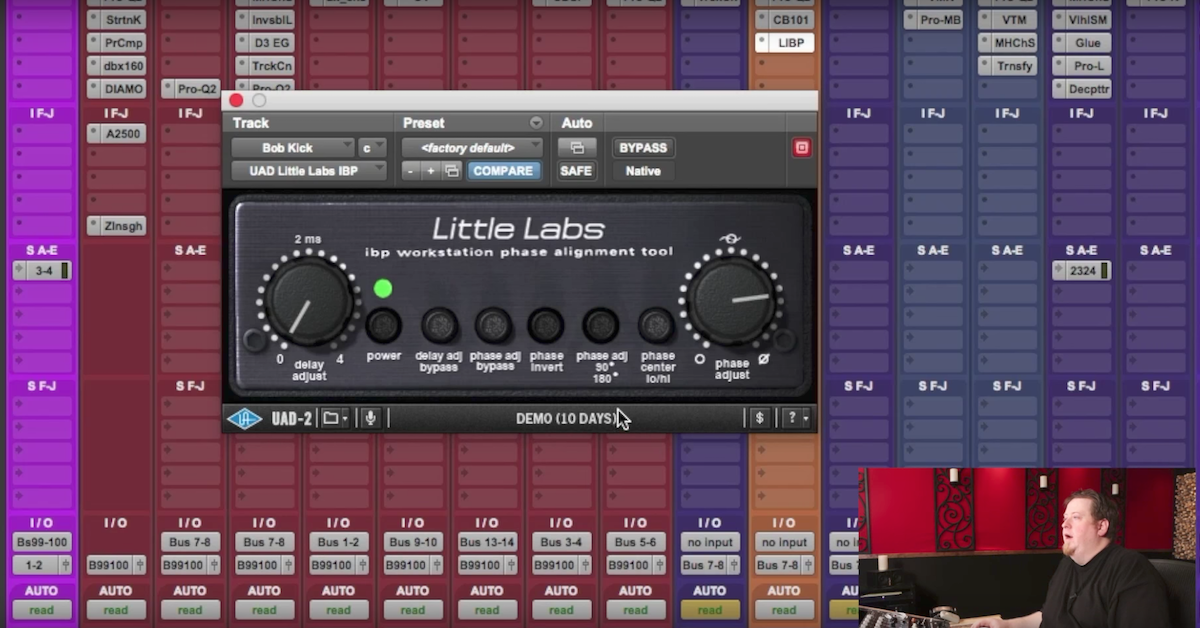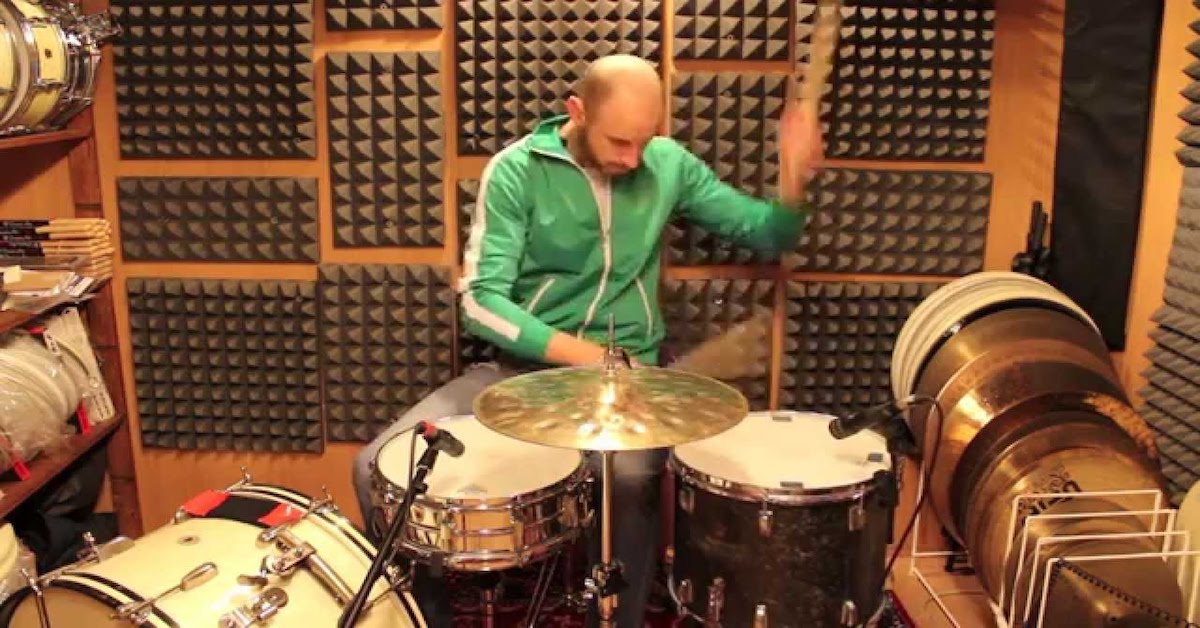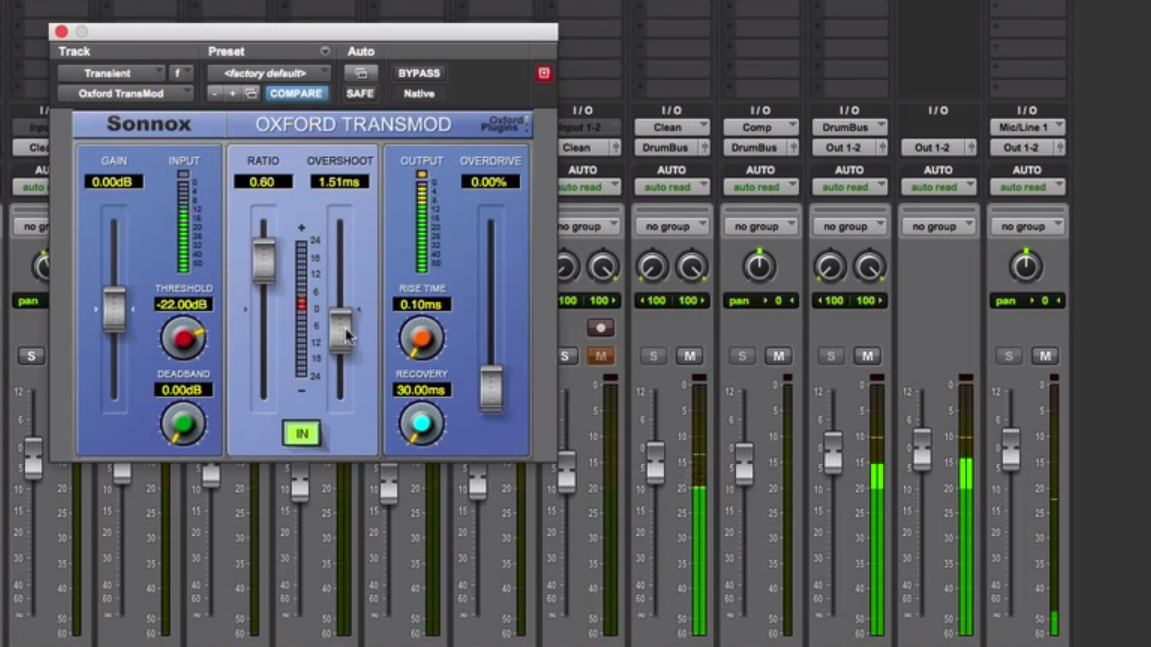How to Fix Drum Phase Issues with Audiomere Polarity Maximizer
In this video, I’m going to show you a new plug-in that I just picked up called “The Polarity Maximizer.”
This is a utility plug-in that solves a very specific problem when you’re mixing, and that’s the issue of phase cancellation and destructive interference.
I’ve already got some other blog posts and videos that you can go and check out where I go into much more detail about what this issue is, but if you have a chance to check those out, I think it will really help you appreciate what this plug-in can help you do for your mixing.
So, here I’ve got a multi-track drum recording with a bunch of different microphones that were different distances and positions relative to the instruments.
So, what can happen is that when I add these signals all together, hopefully they add together in a good way, but you could also add the issue where they add together in a way that they start to cancel each other out, and I lose some of the energy in the overall signal. That’s when I’ve got destructive interference, and that’s what I’m going to try to avoid.
Now, it can be a very tedious process as a mixing engineer to try and figure out all this stuff by hand. So, that’s where a computer and a plug-in comes in, where it can do it automatically for you in a much faster and much more precise way.
So, let me play you back what I’ve got so far. My multi-track drum recording, and I’ve even started to go ahead and mix it with some plug-ins, and this is what it sounds like.
[drums play]
So, the idea here is you’re going to insert this plug-in across all the channels in your multi-track recording.
I’ll go into here and pull up Polarity Maximizer from the company Audiomere, insert it across my mono tracks, now I need to go into my stereo ones, and insert it here.
Alright. So, I’ve got Polarity Maximizer across all these tracks. The next thing that I need to do is pick one of the channels to be the master. They’re all going to send information about the signal on that channel to a single master, and the master then is going to do the analysis.
I’ve got my kick drum I’ll select to be my master. You’ll see the new interface pops up where you can – the main button here is to click “Maximize.” When you click “Maximize,” then you have to play audio back so that it can do the analysis across all different signals.
Now, what I’m going to do here, because I’m working with sampled drums, I assume that this sample library, when they made the recordings, they did a pretty good job about this whole issue of phase cancellation and that kind of stuff. So let me go in and look and see what things are looking like on my top and bottom snare mic.
It looks like things are – even though there’s a time delay, mostly going in the positive and negative directions around the same time. So, why don’t I do this. Before I do the analysis, I’m actually going to go in here, maybe on my top snare, let’s introduce some phase cancellation and see if the Polarity Maximizer will solve the problem.
[drums]
Alright. As soon as I flip the phase on my snare top, you can hear that the bottom end of the drum cancels out.
Alright. So I’ve introduced some phase cancellation into this recording. Let’s see if the Polarity Maximizer will solve this problem.
I’ll open it up here, and next thing I need to do is find where I want to play it back from, hit Maximize on my master, and play it back.
[drums]
It’s listening. Alright, and it said it’s done, and then it decided to optimize, or to maximize the energy in the signal. It decided to flip the polarity on six different channels, and I gained a total of 7dB by flipping the phase, and that increased the signal level.
So let’s go back through these channels and see where it decided to flip the phase.
It didn’t have to on the kick out, but it should here on the snare top. Yeah, you can see that it did flip the phase here, and that’s because I had artificially introduced the phase issue on this channel.
Let’s see the other ones. So here, no phase change, none on these here…
Okay, so it looks like for the overhead, it flipped the phase on that one, and then also here for the ambient near mono, but it did not do it for the ambient far microphone.
So, you can see how it decided that some of these channels need to flip the phase, and other ones didn’t. So I can go back in here…
[drums]
And listen to it. It should’ve fixed the problem with the snare. I can bypass it and you can hear how I lost that energy in my snare, so I’ll add it back in.
So, that’s the Polarity Maximizer plug-in. Hopefully you can see the advantages and what it can bring to your mixing. It can speed up this very tedious process having to figure out, “well, if you’ve got all of these different tracks, what’s the best way they can be added all together?” So, definitely check out this plug-in from the company Audiomere. You can find it at audiomere.com. Make sure to check out this plug-in, and I’ll catch you guys next time.





